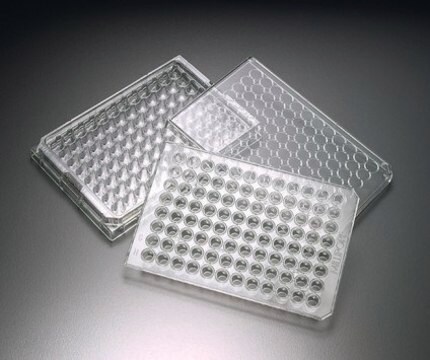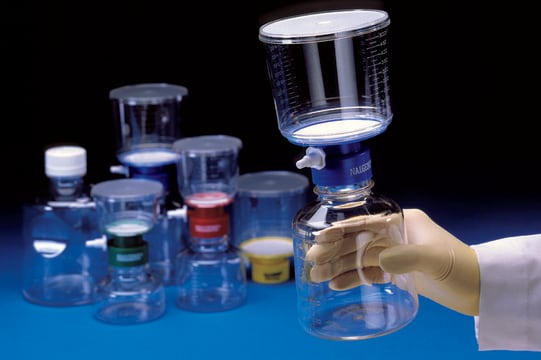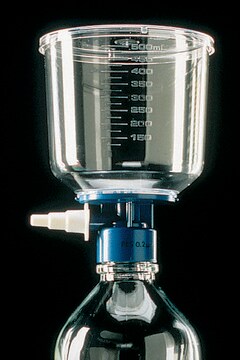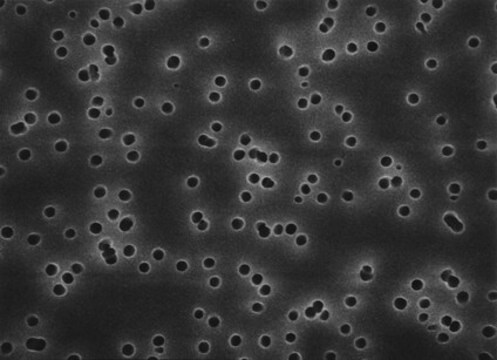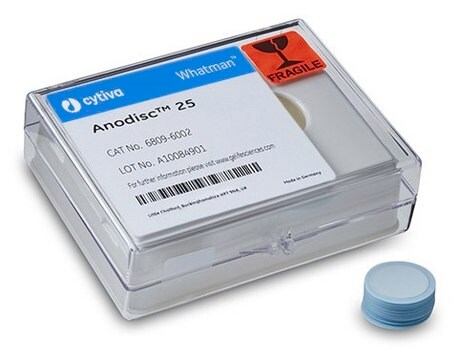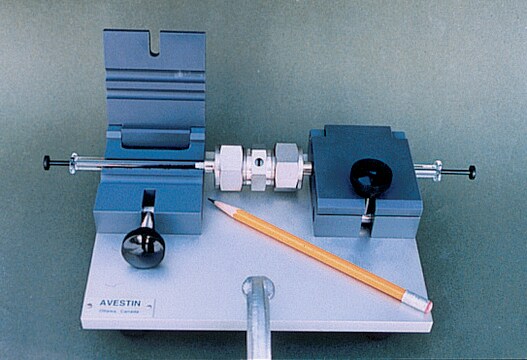HTTP02500
Polycarbonate Membrane Filter, 0.4 μm Pore Size
Isopore™, filter diam. 25 mm, hydrophilic, white
Synonym(s):
Isopore™ Membrane Filter
About This Item
Recommended Products
material
plain filter
polycarbonate membrane
white filter
sterility
non-sterile
feature
hydrophilic
manufacturer/tradename
Isopore™
Millipore
parameter
≥50 mL/min-cm2 water flow rate at 10 psi (typical results)
≥7 L/min air flow rate at 10 psi
140 °C max. temp.
18 mL/min-cm2-psi water flow rate (maximum flow rate per 1.0 psi)
filter diam.
25 mm
thickness
10 μm
gravimetric extractables
<1%
color
white
refractive index
n/D 1.6
matrix
Isopore™
pore size
0.4 μm pore size
10-20 % porosity
bubble point
≥1.5 bar (22 psi) at 23 °C
shipped in
ambient
Looking for similar products? Visit Product Comparison Guide
General description
Application
- Absorbable organic halides (AOX)
- Particle monitoring
- Air monitoring
- Microplastics analysis
- Microplastics analysis grade water
- for culturing organotypic brain slices
- organotypic vibrosections
- as a working electrode for the synthesis of Helical nanomotors.
Features and Benefits
- Membrane structure retains particles on the surface, simplifying counting and analysis
- Isopore™ membranes do not stain, resulting in low background interference
- Non-hygroscopic, allowing for rapid drying and reduced sample analysis time
- Translucent material does not require clearing for transmitted light microscopy; also available in brown variety
Caution
Legal Information
Certificates of Analysis (COA)
Search for Certificates of Analysis (COA) by entering the products Lot/Batch Number. Lot and Batch Numbers can be found on a product’s label following the words ‘Lot’ or ‘Batch’.
Already Own This Product?
Find documentation for the products that you have recently purchased in the Document Library.
Customers Also Viewed
Our team of scientists has experience in all areas of research including Life Science, Material Science, Chemical Synthesis, Chromatography, Analytical and many others.
Contact Technical Service
